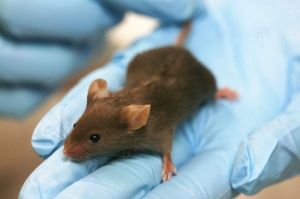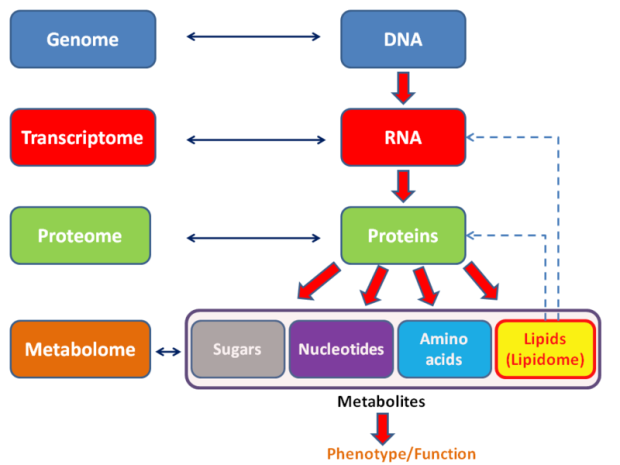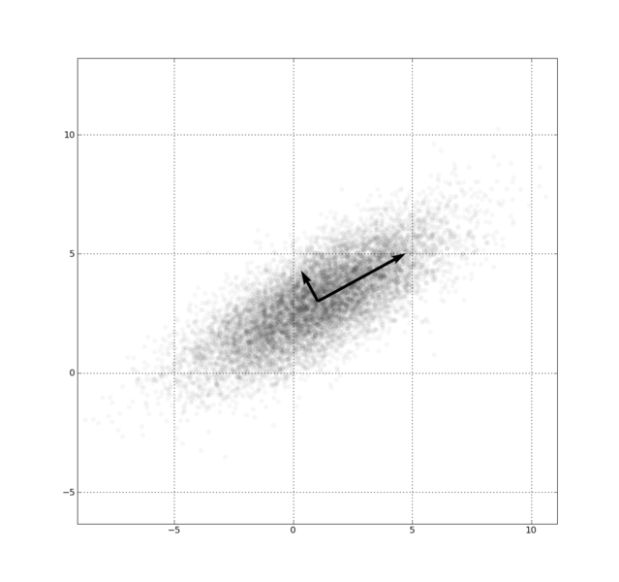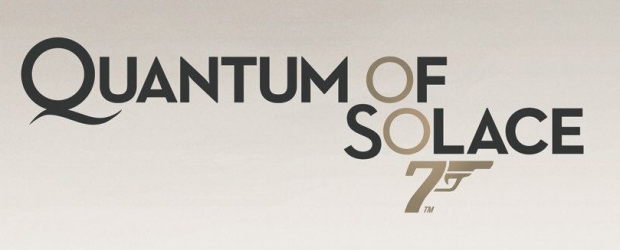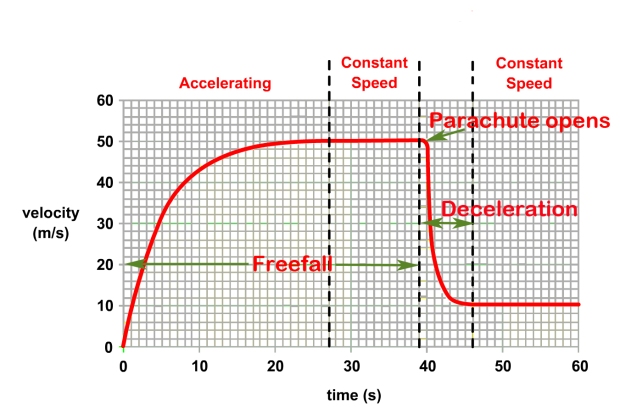Is the Lemur getting fat?
Posted by followthelemur in Uncategorized on December 19, 2015
I’ve been having trouble sleeping for the last two and a half weeks, this is the longest for a while I have had problems sleeping. It’s actually 2:30 am as I am writing this. I’ve been waking up between 1:30 and 5am every morning, and only manage to snooze intermittently after that. I did that thing that pretty much everyone does when they realise that something is a little off – I googled “waking up in the middle of the night”. I’ve not seen anyone link it to cancer yet, but then I did stop in disgust when a page explained that it was all down to my Chinese horoscope.
One thing that did recur is that it might be the result of crashing blood glucose levels overnight. So one feels hungry in the middle of the night as well. My body is totally rubbish at maintaining blood glucose – not like actually diabetic or anything, but I can feel a crash after I eat more than a couple of bits of cake or around 3-4pm, and by the time I get home from work I have a headache and I can barely function. This doesn’t seem to be affected by what I have a for lunch, I need to eat something as soon as I get home. And don’t even talk to me about breakfast. It doesn’t seem to matter what I eat, I’m almost always hungry by 10:30. I gave up on normal cereal; breakfast is either porridge – made with milk, no syrup or jam – or plain full fat Greekstyle yogurt and granola.
I’m toying with the idea that I just don’t eat enough protein. But I’m pretty sure I’m putting on weight too. I’ve been intermittently active for quite a long time, but as a non-believer in gyms – YOU HAVE TO PAY FOR THE PRIVELEGE OF BEING FIT – my exercise of choice is running. Because it’s cheap. But because of knee injuries – which also limits my ability to do team sports – I’m limited as to how much I can do. Earlier in the year, I aggravated my knee by trying to get a respectable time on a Parkrun. So 5km 3 times a week is too much. I’ve lost all enthusiasm to run, I’m struggling to find the time although I clearly have tonnes of time.
But I may have found my motivation – I’m putting on weight. I’ve never been “TV skinny”, but generally, no one would call me fat. I have fat legs, I’ve always had fat legs, there’s nothing I’ll ever be able to do about it, it’s definitely genetic. My mum has always had body image issues and is permanently on some kind of weird diet: low carb, no wheat, eat all the chocolate, fruit and dessert you can in 1 hour – I don’t even know. She tried 5:2, but along with her fat legs, I seem to have inherited her inability to regulate blood sugar from her. She’d basically starve for 2 days, and be grouchy about it.
So I’ve eaten some hummus and a krisproll along with some warm milk (that being protein and supposedly sleep-inducing tryptophan), and I don’t feel hungry or grouchy or headachy anymore.
I am rethinking my eating – I can’t always fit a snack in between 8:30 and lunch because of the nature of work, but I can plan for a couple of proteiny snacks. I plan to gently build up my running. I’m still frustrated at my last attempt at running where I tripped over my own feet and scraped skin off my hand making me as useful as a T. Rex scratching it’s butt for five days.
Let’s see how this goes…
Replacing Animals in Research
Posted by followthelemur in Uncategorized on May 2, 2015
I’m writing this post as a response to the Stop Vivisection European Citizens Initiative (ECI).
What is a European Citizens’ Initiative?
Easy questions first – The ECI
The European Citizens’ Initiative (ECI) was introduced with the Treaty of Lisbon, aimed at increasing direct democracy in the European Union. The initiative enables one million EU citizens, who are nationals of at least one quarter of the Member States, to call directly on the European Commission to propose a legal act in an area where the Member States have conferred powers onto the EU level.
-Wikipedia
It’s basically a petition. There’s a great piece over here at Speaking of Research. To summarise, the ECI was started in Italy, which is currently struggling with anti-science and anti-vivisectionist sentiments and has been picked up in a couple of other countries. It now has the required 1 million signatures it needs to be discussed by the EU parliament.
Here is an interesting graph on the breakdown of which EU countries the Stop Vivisection supporters come from:
European Animal Research Association, originally posted http://eara.eu/activists-turn-to-eu-to-ban-animal-research/
What is vivisection?
The Stop Vivisection website declaration says:
We urge the European Commission to abrogate directive 2010/63/EU on the protection of animals used for scientific purposes and to present a new proposal that does away with animal experimentation and instead makes compulsory the use – in biomedical and toxicological research – of data directly relevant for the human species.
-Stop Vivisection
So what is animal experimentation? Even experiments that are not on live animals may involve things derived from animals – some antibodies for example are derived from animal blood; cell culture utilises animal products (serum). So while it is an alternative to using live (or dead) animals, these techniques may require products derived from animals.
Various animal species are used for experimentation. Fruit flies, worms (C. elegans is a nematode), mosquitoes, Plasmodium (the amoeba that causes malaria), zebrafish, octopus, mice, rats, marmosets, ferrets, dogs, cats, rabbits, guinea pigs, frogs… this is by no means an exhaustive list.
What is the current legislation?
The ECI calls “to abrogate directive 2010/63/EU” which is the EU which regulates animal experimentation in the UK (and indeed the rest of the EU). The directive is described on the European Commission website it legislates for the protection of animals used for scientific purposes. It aims to limit animal testing and it dictates minimum standards of housing and care. It is based on the “Three R’s” of animal research with the eventual aim of ending all animal experiments. It applies to all vertebrates and invertebrates likely to feel pain (octopus). It also prohibits experimental work on great apes. All animal procedures have to be approved before they are performed. Procedures must only be performed by approved personel.
Fundamentally, the legislation is based on the Three R’s:
- it allows animal use only where no alternative methods exists – Replacement.
- the number of animals used must be minimised, but without compromising the objectives of the project – Reduction.
- methods must be refined in order to minimise suffering and numbers of animals used, it includes housing methods as well as procedural ones – Refinement.
Animal research facilities have to conform to this legislation. In the UK this is enforced by the Home Office.
In the EU it is currently illegal to test cosmetics or their ingredients on animals.
Why use animal models?
Animals are used in basic research and for developing medical treatments. Understanding how biological systems, pathways, organs, genes, or proteins work normally helps scientists understand what happens when these go wrong and how they can be fixed. Some of these can be modelled without having to use animals. Many of these cannot be modelled because the systems are not understood. Contrary to what the Stop Vivisection campaign state, the alternatives are not currently sufficient to replace all animal research. The myths of the Stop Vivisection campaign are addressed point by point here.
Take the brain as an example. There are an average of 86 billion brain cells in the human brain. These have various functions such as light detection, scent detection, they can form circuits that have a single function such as balance, and some act like wires transmitting information from one area to another. These neurons form 100 – 1000 trillion connections. The closest attempt at modelling the human brain used a super-computer to model 1 second of activity and took 40 minutes to run. We are a long way from fully understanding conditions such as schizophrenia, depression and Alzheimer’s.
The issues with doing basic research in humans is that an observer needs to see what is happening in milliseconds with micrometre resolution. These techniques do not exist. Magnetic Resonance Imaging (MRI) uses blood flow as an index for neuronal activity, but it has limitations. Real time MRI has a temporal resolution of 20 – 30 milliseconds and a spatial resolution of 1.5 – 2 mm (Wikipedia), this is not good enough to look at the activity of a single neuron.
The brain is just one organ. The organ systems vary in the way they work. To further complicate matters, they also interact with each other.
Medicinal research also utilises animals. It is possible to observe the effects of a drug on cells in a test tube, indeed many chemicals are screened with techniques that don’t use animals and use human cells instead. There is a huge difference between the effects of a drug on a single cell compared to the body as a whole. Take alcohol, for example. On some neurons it inhibits activity, but these neurons are in different parts of the brain with different functions. The actions of alcohol on a single cell don’t explain why, for example, you need to pee more when you’ve been drinking (a process which involves the brain and the kidneys). That is only one of the things that alcohol does to the body.
Actually, scientists would rather not use animals
The current legislation stipulates that if there is an alternative to using animals, the alternative methods must be used. Keeping animals housed and fed is pretty expensive – the cell-based drug screening methods mentioned above save the pharmaceuticals industry a lot of money. The right alternatives would provide more accurate data than that generated using animals. And researchers working on animals would just rather not use animals if it was possible. The sooner the alternatives are developed the better for everyone. But until then, animal experiments are a necessary evil.
On being agnostic about breakfast cereal
Posted by followthelemur in Uncategorized on July 12, 2014
I’m having trouble with breakfast cereal. I have about half an hour between waking up and leaving the in the morning. In that time I have to wash, get dressed, make lunch and eat breakfast. Because it has to be eaten quickly, breakfast has to be quick to prepare and quick to eat – bacon and scrambled eggs is a no. Cereal seems like the best option: i.e. it’s quick to eat. The selection of cereals is ridiculous. And for some reason, manufacturers seem to think they can stick any old sugary crap into one of those cuboidal cardboard boxes with the caveat “eat as part of a healthy diet” and it becomes a healthy breakfast cereal. A according to the NHS, a report from 2012 stated that ‘sweet breakfast cereals are still too sugary for kids’
It found that overall, 32 out of the 50 were high in sugar, and that 12 out of the 14 cereals (86%) aimed at children had excessive levels of added sugar.
It goes on to point out that a lot of breakfast cereals are little better than sugary crap – 35 of the 50 cereals tested were high in sugar – something as a nation we eat way too much of. Weetabix was the only cereal aimed at children that had low levels of sugar – Frosties (37% sugar) had the highest, and Crunchie Nut Cornflakes were 35% sugar. Even supposedly healthy cereals have high amounts of sugar: Bran Flakes – 22% sugar, Special K – 17%. Let me reiterate – Special K, whose entire remit seems to be make women think they look fat, and the only way to solve this is to eat two meal of Special K a day – has levels of sugar considered too high. Mueslies are also somewhat dubious, Alpen has a fucktonne of sugar in it. At least all the sugar in the Dorset Cereals muesli is from the dried fruit it contains. Basically, the only cereals that are actually healthy are Shredded Wheat, Oat So Simple porridge and Weetabix and presumably their supermarket own brand equivalents. This essentially means that your choices for breakfast cereal boil down to “cardboard” or “sugar flakes”.
I have chosen cardboard. However, I find that I’m almost always hungry at 10:30. Thus breakfast cereal has failed in its promise to “keep me going to lunch”. I have to ask why I even bother. Despite the fact that everyone (I have no idea who specifically told us) knows that breakfast is “the most important meal of the day”. Curiously, science has no fucking clue – studies show that people who skip breakfast eat more calories, studies show that people who skip breakfast eat fewer calories, lose weight/don’t lose weight. It’s all over the place
A behavior that is often targeted in weight management programs and that may contribute to long-term success in weight maintenance is breakfast eating.
A link between skipping (breakfast) and obesity is constantly being challenged and in many studies, a lack of this link was repeatedly demonstrated.
Well, I have chosen to eat breakfast – but why am I hungry TWO HOUS BEFORE lunch? I had a look at the serving size. The serving size of 2 Tesco branded Wheat Biscuits (cheap Weetabix) is 37.5g, this contains 135 calories. I would add about 130g semi-skimmed milk, which google tells me is 65 calories. That’s a breakfast of 200 calories. That doesn’t seem like a lot. should I be eating a larger breakfast?
Another study the NHS reports on published in the Nutrition Journal suggests that people who eat larger breakfasts have a higher energy intake across the whole day, whereas people who eat fewer calories don’t tend eat more food to compensate. This sounds a lot like what may be happening when people skip breakfast altogether. Though there are a great big fat pile of caveats. It’s a cross sectional study observing people’s habits – i.e. people who tend to eat more at breakfast eat more during the day. People are different.
low energy intake at breakfast can be helpful to lower daily intake and improve the energy balance during treatment of obesity Whether or not this approach really favours weight loss has to be examined in further interventional studies. At present prevailing data are rather equivocal.
No one hedges like scientist.
Bust should I really only be eating a tenth of my daily caloric intake at breakfast. Seems small… A fifth would make more sense. According to the NHS Change 4 Life page one should aim for 400 kCal for breakfast, 600 kCal for lunch and 600kCal for dinner (the remainder of your daily intake to consist of drinks and healthy snacks). So, maybe the cereals are wrong. And it’s not just my cereal either: Kelloggs – Fruit ‘n’ Fibre, one 40g serving is 152 calories without milk, Special K 30g serving plus 125 ml semi-skimmed milk provides 172 calories, a 30g portion of Cornflakes without milk is 113 calories. Nestlé – Cheerios suggests a 30g serving plus 125 ml semi-skimmed for a grand total of 174 calories, 40g of Shreddies plus 125 ml milk provides 208 calories. So most cereals are based on small portion sizes. Maybe this enables them to get away with higher sugar levels when giving percentages of your RDA… The reason portions are so small was described by Kellogg’s spokesman Paul Wheeler to Bee Williams at the Telegraph
apparently lots of studies have shown that 30g is about what most children can manage.
The principle consumers of breakfast cereal being children. This is confirmed by Kellogg’s
Knowing this, we provide our serving size recommendations based on what the cereal looks like in the bowl, the level of vitamins and minerals we add and the average amount eaten by a child.
This is starting to make sense; the portion sizes are supposed to be for me, unlike the 75g for rice or pasta posited by the Food Standards Agency. It’s based on what children eat. Therefore, I don’t have to feel like a guilty fat pig when I eat more than the piddling small handful of cereal at the bottom of my breakfast bowl. And neither should any other adult. Nestle even suggest that maybe a small bowl of cereal isn’t really enough for breakfast.:
Nutritionists recommend consuming around 20-25% of your daily calorie intake at breakfast (for a woman eating 2000 calories this is about 400-500 calories). Like any other meal, a good breakfast is one that is balanced and includes foods from a few of the food groups, for example fruits & veg, milk & dairy and bread and/or cereals. A great way to start the day is a bowl of Nestlé cereal with whole grain, milk, a glass of fruit juice and/or piece of fruit.
And with that, I’m going to tuck in 295 kilo calories of malted breakfast cereal, to which I may or may not add additional fruit/crackers/doughnuts…
Metabolomics for Noobs
Posted by followthelemur in Uncategorized on February 8, 2014
They say you learn something new every day. This is especially true for me a few weeks ago; I went on a course for something about which I knew almost nothing: a subject called metabolomics.
OK, first thing: -omics. We have genomics, proteomics, microbiomics, transcriptomics, biomics…and at this point I start making them up. -Omics refers to ALL OF IT. ALL OF THE THINGS IN AN ORGANISM. COLLECTIVELY. Or something. Genome refers to all of the genes in an organism. Therefore, metabolome is all of the metabolites in a organism – it includes amino acids (the building blocks of proteins), fatty acids, lipids, alcohols and sugars. Pretty much any smallish molecule involved in the biological reactions that keep living things alive. Larger molecules, such as proteins are not included.
Metabolomics can be broken down into a number of stages. So you’ve got your thing that you want to measure – what’s the difference between me before eating and me after eating? Let’s say we collect some of my blood before I eat and then some more after I eat. We want to compare them; see what chemicals increase and what goes down. Collection methods are important – we don’t want any of the chemicals to degrade or go through further biological reactions between collecting the samples and testing the samples to see what’s in them. Probably the best way to do this is to freeze the samples in liquid nitrogen. It’s not just for mucking about freezing carrots.
The second stage is identifying all the metabolites in there. This can be done in two ways; if you want to see everything that changes – you can do a quantitative, focussed method targeting a group of compounds using gas chromatography – mass spectrometry (GCMS – complicated chemistry thing I’d forgotten since 1st year undergrad) or a more broad, less quantitative method of seeing everything at a basic level.
Identifying chemicals from this involves looking at a series of wibbly lines to see how much there is, how much it weighs (molecular weight), and what kind of chemical bonds it has. Generally – you compare the wibbly lines to wibbly lines of known chemicals.
The next stage is comparing a bunch of these metatbolites that you have identified in you two different samples, be they from me before and after food, or patients with and without a metabolic disorder to improve treatment. This can be done with statistics – one such test being principal component analysis. It looks like a cluster****, but it is very good at finding the things in the two samples that are most different from each other.
The final stage is looking at your metabolites that are the most different between your two different samples, and figure out what biological processes it is involved. Look at the enzymes involved in its generation and its break down, and identified the genes associated with it.
Why is this important?
This information could be useful in deciding which genes to target in genetic modification of plants, looking at disease markers in plants, evolutionary differences between plants and animals, biomarkers for disease, markers resulting from medicinal drug intervention and environmental stress. And potentially in the growing field of personalised medicine.
Bitching and Whining – “Jogging outside could make you stupid – and more likely to suffer mental health problems”
Posted by followthelemur in Whimsy on January 1, 2013
So, I’m annoyed with a news story. After taking a laziness break post Skyfall, I’m back.
This is the the story in question, originally in the Daily Mail – posted a week after the information was released in the form of a paragraph long press release – suggests that exercising outdoors makes you stupid and is bad for you.

The press release in question doesn’t cite the original scientific paper and doesn’t describe its methods. In fact, I can find no sign of this paper other than the padded press releases in the Daily Mail and Men’s Health. According to the Mail, the Belgian authors of the study looked at the differences between people who walk and/or run outside in a city between noon and 1pm 3 times a week and those taking outdoor exercise in rural areas.
The problem is not that you are outside or that you are exercising, but the pollutants. Exercise, no matter where you do it, is good for you, most people don’t exercise outside in a city; most of us are able to run in quieter areas, parks, away from traffic. Running remains one of the cheapest methods of exercise – costing little more than a pair of shoes.
Gym memberships are comparatively expensive – most being rather cagy about their prices on their websites. It seems to me that the Mail are playing to their middle class housewife readership, those with the disposable income for gym memberships, reinforcing the opinion that simply running outside is not good enough. It’s a lazy, poorly researched piece of fluff, framed as a scare story and frankly, a non-story.
What the Belgian researchers seem to say is that pollution is the problem, and this can be somewhat alleviated by running in a park, or in weather conditions that dissipate pollutants such as rain and wind. Surely the more worrying aspect is that walking outside for a significant length of time is going to expose you to pollutants that impair cognitive ability and raise markers of inflammation.
If you are a runner, don’t let this shoddily subbed piece of journalism put you off going outside. I have had gym memberships, and I have run outside; I have joined and left four gyms. And yet I have been running on and off, injuries permitting, for 15 years. I know which I prefer, but then I don’t have to run in a city.
The Schiensh of Bond: Skyfall
Posted by followthelemur in BlogalongaBond, Science-ish-ness on November 21, 2012
The end is nigh! And through the last 2 years I have learned one thing; I’m not that keen on Bond films. I am, however, a massive Bond nerd. Although I find Le Carre more thoughtful and the Bourne films more coherent, my favourites are Goldeneye, From Russia with Love, Casino Royale and Skyfall.
Also – SPOILERZ!!!
I have, however learned an awful lot of science. I can tell you where to get a jetpack, how to make an invisible car and that a Stradivarius cello sounds no better than a brand new one. I have found the major flaws in Bond villain plans, to the extent I could propose my own. One can only hope that I do not lay my grubby paws on a volcano, a submarine, nerve gas, sharks or DNA splicing technology.
As with Casino Royale, Skyfall loses the lameass gadgets, but it also brings in a geeky new Q.
Were you expecting an exploding pen? We don’t really go in for that any more.
– Q, Skyfall
Q junior is more of a sitting in his pyjamas messing around on a computer genius than his aged predecessor (see also Spooks).
Looking for the Schiensh, I’m going to look past the inadequate security MI6 seem to have in place (after all, the Pentagon got hacked by someone looking for UFOs). Blood seems to be a major theme of Skyfall playing a pretty major role in the credit sequence and as with most Bond films, a lot of people get shot.
Of gunshot wounds and cyanide pills
Bond gets shot twice in the pre-credit sequence, once by Patrice (Ola Rapace) and once by Eve (Naomi Harris). The shot in the shoulder Bond receives from Patrice is indirect; it seems to have been deflected into his shoulder. And for some bizarre reason Patrice uses shells made from depleted uranium, making him VERY EASY TO IDENTIFY. Especially after Bond feels the need to extract the shrapnel from his own shoulder. Bond spends most of the film not being able to shoot straight because of the shoulder wound. Why does this happen? Aside from the blood loss – the wound appears to be fairly peripheral, thus blood loss from this injury doesn’t appear to be important here – the tissues of the shoulder are damaged by the shell. Judging by the location of the scar on Bond’s chest/shoulder area, the bullet hits the pectoralis major muscle. It doesn’t cause enough damage to prevent him fighting Patrice, so I am going to assume that there is no damage to the bones. Untreated damage to the bone may lead to infection, if the bone is improperly set it can heal in the wrong position – this will severely impair mobility of the complicated shoulder joint.
The shoulder consists of three bones, the scapula (shoulderblade), the clavicle (collar bone) and the humerus (top arm bone), and it is actually two joints – there’s the ball and socket joint (glenohumeral joint) that provides mobility and the sternoclavicular joint which provides stability.
When muscle is damaged, immune cells come in and clear up the damage, new cells migrate in and replace the damaged cells. Muscles get damaged all the time and are pretty good at repairing themselves, however, in some circumstances, the immune cells remain at the site of the injury, and the tissue doesn’t heal properly and scar tissue forms. Scar tissue doesn’t have the same characteristics as muscle cells – so the muscle loses some of its function. It is possible that the shrapnel left in the wound may result in a chronic inflammation – this means that immune cells remain in the shoulder and the damaged muscle cells aren’t properly replaced. Given that the shrapnel remained in the shoulder, Bond is lucky not to have had an infection in the tissue as well. According to wikipedia:
High grade partial or full thickness tears warrant surgery if function is to be preserved, particularly in the athletic population
The pectoralis major is responsible for movement of the shoulder, and movement of the arm across the body. When injured, it would affect swimming, lifting, push-ups, bench presses and hanging onto lifts. All in all, Bond is giving his somewhat injured shoulder something of a hammering.
Lets focus is given to the injury Eve gives him when she accidentally shoots him. He takes the shot in the right side of his thorax – this doesn’t seem to have caused any lasting harm. Bond quips to Eve that she caused no more damage that breaking four of his ribs and damaging “some of the less vital organs”. Judging by where the blood is coming from, it appears that Bond has been hit in the ribcage. Given that Bond survived with limited ill-effects, I’m going to assume Bond was hit around four of the lower ribs (this seems to correlate with what we see before the opening credits. It also looks like the bullet missed the right lung as well. What is of concern is that the gunshot wound is quite close to Bond’s liver. However, patients with liver injuries from things like gunshots do not often require surgical treatment; bleeding ceases on its own. And if the bullet doesn’t hit any blood vessels, Bond stands a decent chance of survival.
If you really want to depress yourself, read the wikipedia article on cyanide. Anyhow, cyanide stops cells being able to use oxygen. Given that scientists know what a fatal dose of cyanide is, if it were being issued as a suicide pill by MI6, one would probably make a cyanide pill with a much higher dose than would be required to kill someone. The signs of cyanide poisoning take effect within minutes of ingestion. Because the brain is so dependent on oxygen – a large proportion of the blood pumped out by the heart goes to the brain – the first symptoms include confusion, dizziness, blurred vision. At the same time, the drug is going to severely affect breathing and the heart. The heart will stop beating and blood flow stops. Cyanide poisoning can be treated. My thinking with regards to Silva is either that the cyanide pill contained insufficient cyanide to cause death, or that his captors had him treated for cyanide poinsoning.
Silva, in his conversation with M claims that his hydrogen cyanide pill did not kill him (I’d argue that there has been some minor brain damage as a result of the temporary hypoxia to his brain though), but it seems to have done some serious damage to his internal organs – the MSDS (materials safety data sheet) for hydrogen cyanide does list nausea as an effect of cyanide.
…burned all my insides
– Silva, Skyfall
Although burns aren’t generally noted as effects resulting from cyanide poisoning, what I have been able to dig up are a few cases gastrointestinal effects, including one case of necrosis of the gut – but these seem to be related to solutions of sodium and potassium cyanide. Potassium cyanide solution is also a skin irritant. However, given Silva’s cyanide appears to be in pill form, it seems that a cyanide pill is unlikely to be the cause of Silva’s disfigurement. I can’t see why it would destroy his teeth or cause his cheek to collapse.
Thanks Sam Mendes for making Skyfall worthwhile, I look forward to seeing which way Bond will go. Do we get another Quantum of Solace or will we get another decent film.
Thanks for reading, Schiensh will return.
Follow the Lemur wishes to thank Dr Maskell for his helpful discussions on cyanide.
The Schiensh of Bond: Quantum of Solace
Posted by followthelemur in BlogalongaBond, Science-ish-ness on October 20, 2012
Skyfall is so close I can smell it. My parents booked their tickets last week. MY PARENTS. They usually only book for Harry Potter films. But, on our way to Mendes and QILF we still need to negotiate Quantum of Solace and we had better do it quick before I forget it again.
The problem with QoS is that while it is a serviceable Bond film – it does the join the dots globe-trotting reasonably well and it more or less has a plot – it suffers from not being as good as Casino Royale, and from being utterly humourless. It doesn’t have the stupid of an invisible car, Denise Richards as a nukular physicist, outrageous racism, psychics, space battles, stupid Bond-girl names, jet-packs, gadgets, gizmos, death rays, submarines, or sharks with frickin’ laser beams on their heads. Dominic Greene is no Blofeld, He’s not even a Le Chiffre. In short, it’s not bad enough to be memorable.
Luckily, it looks like there’s some suspect science in there…
Splatted
Leaving aside the fact that the pile of junk airplane that Bond has managed to acquire for the plane chase would never be able to out-manouevre the pursuing fighter plane, that’s not how you skydive. Here’s what tv tropes has to say on the matter.
We’ll assume that Bond and Camille are at terminal velocity – so somewhere around 120 miles per hour. The parachute is opened about 2 seconds before they hit the ground. It is very unlikely that opening the parachute at this height would slow down Bond and Camille to the point where they wouldn’t be smashed to pieces. Although the deceleration provided by deploying the parachute should (according to wikipedia) slow descent from 120 miles per hour to 18 miles per hour, this isn’t quite instantaneous – it would take a few seconds to slow them down (as you can see from the graph below).
For things like BASE jumping, modifications have to be made to the equipment; BASE jumping is done from lower, land-based altitudes, and a chute must be deployed much more rapidly because the fall is that much shorter and there is less time to slow down to a survivable falling speed.
As has previously been discussed in Schiensh of Bond there are numerous documented cases of unlucky skidivers whose parachutes fail to open. Although people can survive, they seldom survive completely unscathed.
How to make a desert
Dominic Greene’s plans for world domination of Bolivia involve placing a puppet dictator and controlling the water supply. By building dams and creating sink holes, Greene has successfully taken control of 60% of Bolivia’s water supply.
Bolivia is rich in natural resources, including vast amounts of natural gas, and an abundance of minerals. Although the country is rich in natural resources, environmental degradation is leaving the inhabitants in poverty. These threats include deforestation, water pollution occurring as a result of increased industrial mining and natural disasters. The links between environmental degradation are highlighted in this report.
Throughout much of Bolivia, water sources are plentiful, however, in some areas including the mountainous regions, water is becoming more scarce. The real threats to fresh water are principally pollution; there is industrial waste from mining activities, tanning and leather processing, sugar refineries and there issubstantial pesticide run-off from farming.
Creating a desert from tropical rainforest is major factor in the incidence of environmental disasters. Deforestation, either because of logging, clearing of forest for farmland or extraction of minerals, leads to degradation of the soil. Without the trees, topsoil is eroded and is less able to absorb water. It becomes less fertile, but the area becomes much more prone to flooding. This change in the landscape is known as desertification.
Dominic Greene’s plan to hide all the water is somewhat unambitious – he could more successfully create a desert by pushing industrial development in this developing country. Though, I suppose this would not be entirely in keeping with his environmental image.
Why is there a hotel in the middle of the desert?
I have yet to find a convincing argument as to why there is a hotel in the middle of the Bolivian Atacama desert. It’s clearly deserted. No one uses it. Nor can I understand why, in the world’s driest desert, there are such a large number of flammable fuel cells in and around the mostly wooden hotel. Health and Safety clearly is not a thing in Bolivia.
Why would anyone build a hotel in the middle of a desert? Well, the structure used in Quantum of Solace is the Paranal Residencia, a hotel built for workers of the European Southern Observatory, where there is a telescope in the Chilean Atacama desert called the Very Large Telescope. According to a paper on making the Paranal observatory more green, the complex relies entirely on diesel powered generators. The alternatives they were looking at were solar photovoltaic cells and wind power. Not hydrogen cells.
As for the fuel cells apparently powering the hotel in the film – we don’t get much information about them, we do see a container of hydrogen explode. Hydrogen is very flammable. so if there is shooting and stuff going on, it’s going to catch fire. Especially if your building is primarily made of wood…
Right, Mendes. BRING IT.
The Schiensh of Bond: Casino Royale
Posted by followthelemur in A to Z of Think-o-logists, Science-ish-ness on October 3, 2012
Casino Royale is a) my favourite Bond film, but also causes me something of a problem because b) unlike the rest of the Bond films, the dodgy science is all but absent. Thanks for listening to my wailing from Die Another Day. However, what sort of lemur would I be if I didn’t go digging – so this months BlogalongaBond is inspecting the minutiae.
It’s 2006, Bourne has happened. Parkour is a ‘thing’, and Gunther von Hagens is having legal troubles concerning his suspiciously fresh corpses. Bond has be re-Bourne (sorry) in an origins story, drenched in realism that takes us back to a time before he was a double-0. Hell, it worked for Batman.
Anatomy Lesson
Gunther von Hagens is a Polish anatomist known for his live tv dissections and his hat. The hat being less controversial than the dissections for some reason. Human dissection has had a bumpy ride. The Greeks acknowledged that human dissection was an important step in understanding how the human body worked, and understanding how the body works is vital in figuring out what to do when it goes wrong. Human dissection was forbidden by the Romans, so the greek physicians had to make do with animal dissections, Galen was one such anatomist and had to work under the assumption that what was true for a monkey was true for a human. Curiously, Christian Europe had no such issues with human dissection, and thus it continued. Controversies would emerge from time to time regarding the origins of the bodies. In England dissection was prohibited until the 16th century, when the Royal College of Physicians and the Company of Barber Surgeons where allowed to perform dissections on bodies of executed. But then, the demand for corpses outstripped what the gallows could supply, and more dubious suppliers emerged.
Von Hagen’s genius which enabled the Body Worlds exhibition to happen (as well as the Animals Inside Out exhibition this year) is his patented method by which he was able to preserve the tissues of the cadavers in resin. There are extraordinary exhibits in the Animals Inside Out exhibition where only the blood vessels have been plasticised – including the shark below.
Weeping Blood
Le Chiffre’s interesting eye defect is known as haemolacria and appears to be the result of an injury to his eye.
Weeping blood comes merely from a derangement of the tear duct…The condition is rare
Le Chiffre
It is quite rare, there are only a few documented cases and there doesn’t seem to be one clear cause, however it may result from conjunctivitis, damage to the tear duct, a tumour of the lacrimal gland (which produces tears) and it can occur acutely in women as a result result of monthly hormonal fluctuations.
Bond Loses it All
The following section comes with the caveat that I know nothing about poker, so please feel free to correct me if I am wrong. I had a two hour crash course on Texas Hold ‘Em with someone with better math skills who does play poker. There are numerous discussions on the internet as to why the games in Casino Royale are unrealistic. For a start, people complain about Bond “Splashing the pot” – shoving in a load of chips, scattering them so that they are hard to count. But that’s the kind of man Bond is, he doesn’t hold with “Etiquette” and being helpful to dealers.
The hand in which Le Chiffre cleans out Bond is rather interesting if very unlikely (All of the games are discussed here). On the table are a pair of Jacks, a pair of Kings and an ace. Bond has a very good hand – full house, aces and Kings. From Bond’s point of view, there are only two possible hands Le Chiffre can get that can beat this: a pair of Jacks (which would give Le Chiffre four of a kind) or two Aces (this would give Le Chiffre a better full house than bond, three Aces and two Kings). Let’s look at the odds of this.
There are five cards in the middle, and two cards in Bond’s hand – Bond can see 7 cards in total, there are therefore 45 cards Bond can’t see. The odds of Le Chiffre getting one Jack are 2 in 45, the odds of Le Chiffre getting the second Jack are 1 in 44. As a calculation, the probability of Le Chiffre getting both Jacks is this:
2/45 x 1/44 = 0.001
That is a probability of 1 in 1000
The odds of Le Chiffre of getting the two Aces is the same, so there is a one in five hundred chance that Le Chiffre has a hand that can beat Bond. Essentially, what I am saying is that Bond is right to be confident of a win, and the fact that he is swayed by Le Chiffre faking his tell is beside the point. At this point, Bond doesn’t miss-play when he throws everything into the pot, he is rightly confident in his hand.
The final game is also riddled with inaccuracies and improbabilities: the players reveal their cards in the wrong order; they don’t show in the order in which they have played, Bon’d hand isn’t particularly strong on it’s own. To work out the probability of Bond winning, taking into account all the other players cards and the cards already on the table takes more mathematical skill than my grade B in GCSE maths (read: I can’t be bothered).
Clearly all for dramatic effect.
Dirty Martini
Later the same evening, Bond is poisoned. This manifests as profuse sweating and Bond Looking Like Shit. in an attempt to get the poison out of his body, Bond attempts to make himself vomit by drinking a whole load of salt water. However, the poison is taking effect, he runs to the Aston, contacts MI6, who identify the toxin in his system using the crazy telemetry chip which is relaying his vital signs. There is a brief moment of panic, where they argue over what drug to give him before he defibrillates himself, and they end up opting for whatever is in the useful blue pen.
After stating that Bond has “ventricular tachycardia” which they identify by looking at Bonds electrocardiogram That’s some impressive data relay – there’s quite a bit of data involved in transmitting real time physiological parameters – stand in the wrong place and my phone can barely cope with Google maps.
Ventricular tachycardia is a fast heart rate that originate from the ventricles, rather than the pacemaker node. This means that the heart beat is uncoordinated. In a patient with a pulse, electrical shocks to the heart can stop the ventricular tachycardia, but this is different from using a defibrillator. A defibrillator should only be used on patients where the heart has stopped, because if it’s given to patients with a heart beat, it can further disrupt the coordinated beats of the heart.
Digitalis was identified as the poison, I’m not entirely sure how – a number of drugs may cause ventricular tachycardia. And in my experience, identifying a chemical takes more than just looking at the victim’s biological signs, it usually involves big scary machines – like spectrometers or chromatographs. Just to be pedantic, Digitalis is just the latin name of the foxglove, it doesn’t specifically pertain to a particular toxin. The foxglove contains several compounds with similar actions, digoxin is the most important, but it also contains ouabain. These are cardiac glycosides. When ingested, they cause nausea, vomiting and diarrhoea. In the heart, they slow conduction in one of the pacemaker regions, increase the force of contraction, and mess with the rhythm – including ectopic pacemaker activity. Glycosides increase the activity of nerves which slow down the heart because they slow the spread of electrical activity through the heart. In higher doses, digoxin disrupts the electrical activity to such an extent, that the rhythm originates from different places in the heart, and can lead to ventricular tachycardia (so this part of the film is accurate). Also, my reading seems to suggest that MI6’s suggested drug treatments are fairly on the ball. They settle on lignocaine – this is a local anaesthetic, but what it does is it stops nerve conduction. Other drugs that would be useful are beta blockers – these block adrenaline receptors in the heart and will slow the heart down, or phenytoin which reduces the spread of electrical signals in the heart.
What I find a little disturbing is how quickly the digitalis in Bond’s martini get’s to his heart. Though digoxin takes effect quite rapidly, it still needs to be absorbed by the stomach before it can be carried to the heart. The absorption seems to take about 30 mins to 2 hours.
That sinking feeling…
I find it hard to believe that the building in venice is being supported by floats. While Venice is apparently sinking and there are plans to raise buildings on pistons. The foundations of the buildings are built on small islands, and the canals or Venice aren’t that deep anyway…
Next month in BlogalongaBond, I shall be trying to stay awake through Quantum of Solace, a feat I have yet to achieve…
The Schiensh of Bond: Die Another Day
Posted by followthelemur in BlogalongaBond, Science-ish-ness on September 3, 2012
We’ve put it off for as long as we could, but it’s August on BlogalongaBond and no longer can we put off the travesty that is Die Another Day. It wasn’t a bad idea in the scheme of Bond films – the plot is nowhere near as bad as that of Moonraker or Thunderball – however, the bad starts pretty early; it never really recovers from the sheer awfulness of the Madonna song. In fact, the theme tune is possibly the only thing about the film worse than the science. I welcome you to Die Another Day: STOP GETTING SCIENCE WRONG
Can you really cross a minefield with a hovercraft
Some googling suggests that yes, yes you can cross a minefield using a hovercraft. Mines can be triggered by a number of methods including pressure, movement, sound, magnetism, vibration and occasionally tripwires. Some rooting around on the internet indicates that modern military hovercraft create virtually no pressure, acoustic or magnetic signatures. Obviously, anti-personel mines triggered by tripwires are still going to be a problem for the hovercraft, but yeah – DAD got some science right.
Self-induced heart attack
I’m not even going to discuss the crazy non-invasive bioscan the MI6 medical department seems to have going on. What I am worried about is the way Bond consciously decreases his heart rate until it stops, thereby faking a cardiac arrest, and going from the heart stopping to a full blown escape. The heart contains an intrinsic pacemaker – called the sinoatrial node (SAN). If you remove a heart from the body, it continues to beat. The intrinsic heart rate can be modified by the two divisions of the autonomic nervous system – the parasympathetic system slows the heart while the sympathetic nervous system speeds it up. Some people are able to control their heart rates, and it is apparently an ability that can be learned. Some yogis claim to be able to stop their hearts, and although they can substantially alter their heart rates, their ability to stop the heart has been difficult to document under scientific conditions. They appear to accomplish this by contracting muscles in the abdomen in order to prevent blood being returned to the heart. The sounds that the heart makes become muffled, so this does appear to work.

Top panel is an electrocardiogram trace (ECG) of someone stopping their heart beat. The lower panel is the same person with their heart beating normally.
However, I did stumble across this case report of an airplane mechanic who was able to consciously stop his heart for about 5 seconds (see the figure above). The researchers suggested that the changes in the man’s heart were related to a rheumatic fever, damage to one of his heart valves, and his ability to consciously control his autonomic nervous system. This appears to be unique, down to changes in the body rather than a trainable skill. Given the brain’s absolute requirement for oxygen, if someone were to drop their heart rate until the heart stops beating, they’ll very quickly become unconscious. When unconscious, the autonomic nervous system will kick in and your heart will start beating again. Although I do wonder if Bond could go from borderline unconscious to making a rapid escape that quickly.
Excuse me, where’s this diamond from?
The chemical composition shows this is from Sierra Leone
…claims the diamond expert Bond visits, after merely looking at the diamond. Identifying conflict diamonds is difficult; physically, they are indistinguishable by eye from diamonds from elsewhere in the world. By eye, it is possible to identify some impurities. While some of these impurities can tie a diamond to a geographical origin, looking at the samples by eye isn’t good enough to identify conflict (Blood Diamond is a great film about conflict diamonds, much better than this guff, you should totally watch it). Currently, all non-conflict diamonds go through the Kimberly Process Certification Scheme – the idea is that origin of a diamond is documented. Diamonds in the scheme can only originate from countries in the scheme and can only by imported by other countries in the scheme. The idea is that you get a flow of diamonds through countries that do not deal with conflict diamonds. The Kimberly Scheme came into being around the time DAD was made. Global Witness, who were instrumental in combating the trade in conflict diamonds, are now arguing that the Kimberly Process is flawed and that conflict diamonds are coming to market as Kimberly certified diamonds.
Preliminary work has been done in the last year in which lasers vaporize a tiny piece of the diamond. The light fingerprint that this creates can be compared to those of samples from known locations. In a small scale study, the scientists were able to determine a country of origin of a diamond with 95% certainty. It will be a few years before this can be used commercially however.
Yeah, that’s not how gene therapy works. Morons.
When Jinx goes to the sleazy doctor to ask about the gene therapy he explains how it’s done
first we kill off your bone marrow to wipe the slate clean,
Then they introduce new DNA from healthy donors
First question: why kill off the bone marrow? The bone marrow is where your blood cells (which are a major component of the immune system) develop. This is why, in patients with particular blood cancers and immune system disorders, the bone marrow is killed off by radiation or chemotherapy and is replaced by that of a donor. While this may be a required first step in the crazy gene therapy in DAD to prevent the immune system killing off all the new cells with the new DNA, this isn’t how you’d actually do gene therapy.
DNA is present in most of the cells of your body (mature red blood cells do not have a nucleus so these don’t have DNA). DNA is the instruction manual on how to build everything in your body. Half of it comes from your mother and half from your father. DNA can be changed, or mutated, by exposure to radiation or chemicals (generally bad) or by a process called methylation (generally good). Gene therapy is the insertion of a gene to cure a disease. Success has been limited because it is difficult to get the new DNA into the required cells, the effects of the therapy aren’t necessarily long-lasting, and the immune system rejects the new DNA like it would attack a disease. For the crazy Cuban clinic’s ridiculous whole body DNA transplant, you’d have to change the DNA of all the cells of the body. But would you only need to change the DNA of recognisable external features like skin, hair, eyes? Colonel Moon/Graves body shape changes, indicating that his bones must also be changed. There is a question of whether you’d need to perform the transplant on the brain, would this change a persons memories? So would you transform the body one part at a time? If you are wiping out the bone marrow first, this would mean the immune system wouldn’t attack the cells with the new DNA.
The most effective method for delivering DNA is by using a virus. Viruses are very good at taking their DNA, shoving it into the cells of other organisms which then make the bits and pieces for new viruses, assembling and releasing them. By replacing the virus DNA with new DNA, a virus can be used to deliver this new DNA to cells in the body. Human cells have 46 chromosomes. It would be hugely problematic to fit this much genetic material into one teeny tiny virus. An adenovirus (one of te virus types used in gene therapy) is 100th the size of human chromosome (and there are 46 of them to squish in there). This still leaves us with the problem of DNA delivery.
The dubious clinician goes on to explain that the new DNA from a healthy donor is introduced – it would seem that DNA donation is a terminal procedure, as the doctor states that DNA is taken from “people who won’t be missed”.
Weirdly, this plot point mirrors You Only Live Twice where they try and pretend Sean Connery is Japanese.
If you were going to drugs cheat in fencing, I’m pretty sure you wouldn’t use steroids
It is explained that Miranda Frost won Olympic gold after an opponent was found dead after overdosing on steroids.
Fencing is a sport that relies on speed and reaction times. Steroid usage for enhancing sporting performance is usually restricted to sports where strength is required over a brief period of time – normally sprinters, weightlifters and, for some reason, baseball players ( yeah, I don’t care about steroid use in baseball either). It’s actually pretty difficult finding any record on the internet of fencers failing drug tests; generally, the drugs of choice are stimulants – in theory they keep you alert and focussed, although in practice they may make you shaky. There is some argument as to whether blood doping – a method to improve the oxygen carrying capacity of the blood – would be of benefit in fencing. Fencing isn’t really an endurance sport, fencing matches are usually over in a few minutes. Incidentally, the only failures I’ve been able to find have been for recreation drug usage. The biggest case I’ve come across concerns the italian fencer Andrea Baldini, who failed a test shortly before Beijing, testing positive a diuretic (something that makes you pee more), however, this was later overturned. Diuretics are on the band substances list as they are often used as masking agents in covering up usage of other drugs.
Death from an acute overdose of steroids is also quite unusual, there are a few documented case, but deaths tend to stem from long term steroid usage. Use of steroids over a long time leads to changes in the muscle of the heart which increases the risks of heart attack. Cases of fatal overdoses of steroids are almost unheard of in the scientific literature.
Wait, I think I forgot about something! In a film where the Bad science JUST KEEPS HAPPENING, I forgot about the INVISIBLE CAR!
Invisible car
Back in 2002, buried in the sheer stupid of John Cleese’s Q, DNA transplants and Madonna’s noise – MI6 might have been on to something.
Adaptive camouflage. Tiny cameras on all sides project the image they see on a light emitting polymer skin on the opposite side. So to the casual eye, it’s as good as invisible
Impossible, you ask? Well feat your eyes on this marketing campaign from Mercedes
Mercedes accomplished this stunt by covering the car in LED mats and having cameras on the opposite side, and projecting the images from the cameras on the LEDs. Exactly as Q described with the Vanquish. However, with the Mercedes setup, the car only appears invisible in one dimension. Also, the LED mats, cameras, computing equipment and additional power supply weigh about half a tonne. Probably unfeasible in 2002, however, it makes for an interesting video.
Right, Pierce, done now.
The Schiensh of Bond: The World is Not Enough
Posted by followthelemur in BlogalongaBond, Evidence based wafflings, Science-ish-ness on July 31, 2012
I just saw the new Skyfall trailer, and now I am so blummin excited! But until then, there is BlogalongaBond. In this month’s BlogalongaBond I look at some of the less believable bits of The World is Not Enough, no, not Denise Richards being an Atomic Scientist (or a nuclear physicist, or something) Only slight less credible – The bullet going through Renard’s brain making him superhuman – in TWINE: all this cackwaffle is in your head.
Twenty-six minutes into the film we make the acquaintance of the film’s antagonist – the anarchist Viktor Zorkas AKA Renard. The hot doctor with a moronic name gives us the, ha, medical history. 009 put a bullet in his brain:
…It’s moving through the medulla oblongata killing off his senses: touch, smell; he feels no pain, he can push himself harder and longer than any normal man. The bullet will kill him, but he’ll grow stronger every day until the day he dies.
Dr Molly Warmflash
Firstly, how on earth did a bullet get into Renard’s brain, then get stuck in a way that means it’s slowly travelling through the brain? The bullet presumably got deflected which slowed it down. Also, the bullet has, presumably avoided all major blood vessels. Had any blood vessels been ruptured by the wayward bullet, the resulting haemorrhage or haematoma (small blood clot) would severely impair the oxygen supply to the brain (oxygen supply to brain v.v. important – death occurs in minutes if it is disrupted). Another problem would be swelling of the brain as the damaged parts of the brain start to become inflamed and swell up. The brain has the consistency of set yoghurt or blancmange, so it’s very easy to damage. Swelling of the brain would lead to structures on the outer surface pressing on the inside of the skull getting damaged.
Although it is highly unlikely that the bullet would still be going through Renard’s brain with the same trajectory with which it entered, the migration of a bullet inside the brain following a gunshot wound is not unheard of. Movement of a bullet is influenced by, amongst other things, gravity and the weird pulsing movements of the brain itself. Even given the above, a remarkable number of people survive brain injuries. As it travels through the brain, the bullet will compress tissue, damaging it. This damage also spreads to surrounding tissue, so the injury is not just limited to the brain displaced by the bullet.
I pulled the following list of complications from a paper assessing complications following brain injury
Out of 442 patients
Infection (Local or systemic) 27 (6.1%)
CSF fistula 20 (4.5%)
Hydrocephalus 9 (2%)
Intracranial hematoma 16 (3.6%)
Wound healing problems 8 (1.8%)
Drug reactions 52 (11.7%)
Total (patients with complications) 132 (29.8%)
I coughed my way derisively through Warmflash’s description of Renard’s condition because clearly the good doctor knows nothing about the anatomy of the brain.First off, the bullet is not travelling through the medulla oblongata. The medulla oblongata (often referred to simply as the medulla) is the lower part of the brainstem, it joins the brain to the spinal cord. It is also one of the most crucial parts of the brain as it houses the cardiovascular and respiratory centres. This makes it vital in maintaining blood flow and blood pressure. More importantly, it controls breathing – without the medulla sending messages to the lungs, you would stop breathing.
The following caveat applies to what is written below – I have failed two neuroanatomy exams. But, armed with Jurgan K Mai’s Atlas of the Human Brain and the MRI section of the Allen Brain Atlas, I aim to stomp this into teeny weeny waffly pieces.
I have attempted to extrapolate the route of the bullet through Renard’s brain using screen caps of the film and the Allen Brain Atlas. This has been rather tricky as the trajectory of the bullet is in three dimensions. However:
The bullet enters the skull via the frontal bone. The first part of the brain affected would be the medial orbital gyrus or the obitofrontal gyrus. The orbitofrontal gyrus is part of the prefrontal cortex. This is the part of the brain involved in reasoning and decision making, but are also considered to be involved in reward and reinforcement pathways. So presumably, Renard’s decision making abilities would be impaired. But then, he is an anarchist, so maybe no one noticed. Altered structure of orbitofrontal regions have been identified in numerous psychiatric disorders including schizophrenia, mood disorders and drug addiction.
Once past the frontal lobe, the bullet passes through white matter – these are the cables that join the bits of the brain together. From here, the bullet passes through the putamen and globus palladus – both structures of the basal ganglia. The basal ganglia plays an important role in the regulation of movement. The basal ganglia is the part of the brain that is impaired in patients with Parkinson’s disease, this is seen primarily as a difficulty in initiating movement. Close to the globus pallidus is the nucleus accumbens. The nucleus accumbens appears to also have a role in reward pathways, decisions and emotions.
By my guess, the hippocampus would also be trashed by the bullet. The hippocampus is thepart of the brain that is involved in consolidating short term memories into long term once. One of the best studied cases of this is Henry Molaison who had the hippocampi removed from both sides of his brain. He was studied for years; the key findings were that he was unable to form new memories like that guy from Memento. But he was able to learn new motor skills. The inability to learn anything new is not a particularly useful skill in a super villain.
Until this point, all the damage done by the bullet is on the right side of his brain. As a general rule, the right side of the brain controls muscles and receives touch input from the left side of the body and the left side of the brain controls and receives input from the right side of the body. In a right-handed person, the left side of the brain is often the side of the brain that deals with speech and language, whereas the right side of the brain is more important in things like spatial reasoning and utilises non-verbal cognitive processes (it’s a little hazy when you consider left-handers). It is the woolly intuitive brain, whereas the left side is the subjective, analytical brain. Given Robert Carlyle is right handed, I’m going to assume Renard’s ability to deal with people’s emotions and seeing the big picture are impaired – hence why he needs Electra’s guidance as a supervillain.
So far in TWINE the bullet has only made it as far as the pons. The pons is the uppermost part of the brainstem, all the neurons that carry information to and from the brain to the spinal cord travel in here, so damage can have catastrophic consequences. By this point, the bullet has reached the midline, so it is probably affecting both sides of the body. It also houses important structure that are involved in hearing, balance and taste, in addition to the nerves involved in sensing touch and controlling movement of the face. Crucially, the pons contains the reticular formation – a structure vital to maintaining consciousness – if this is damaged, it will lead to a coma. If the bullet damages any of the nerves that control the arms or legs passing through the pons, Renard would be paralysed. So some of what Dr Warmflash is accurate – if only by accident. He should lose his senses only towards the end as the bullet enters the pons. There seems to be little evidence that Renard will lose the ability to feel pain.
Warmflash’s assertion that Renard’s inability to feel pain mean that he has superhuman strength are somewhat simplistic. M and the doctor tell Bond that because Renard cannot feel pain he has extraordinary strength. This doesn’t make sense. Sustained or intense exercise is limited in humans by a number of factors; the first is muscle fatigue. The nerves that activate the muscle may reach a point where they are not able to fire fast enough, the muscle no longer contracts. There is no pain involvement, so Renard’s muscles will fatigue in the same way as anyone else’s. A second consequence of muscle overuse would be depletion of the stuff that powers the muscle like oxygen, glucose and calcium. In this case, the muscles simply fail to contract and there is no associated pain – thus, Renard’s inability to feel pain would not affect this. The third way in which exercise could affect muscles would be where it causes muscle damage and while this would cause pain, and Renard would be able to push through what would unbearable pain. However, pain is important for us in preventing or limiting us damaging our bodies. Renard’s injuries would likely go untreated and they would get worse. He would be prone to infections in the injured areas.
There are genetic conditions which result in people not being able to feel pain. Patients have, in general, normal touch sensation (except temperature). Rather than making people stronger, congenital pain insensitivity increases the risk of infection as wounds go unnoticed. Here is an interesting account of a girl unable to feel pain. Other problems associated with inability to feel pain include not being able to feel when there is damage to the eye. As a consequence, eye infections become common, and eyesight can be permanently impaired.
And now I’ve lost all my readers just in time for Die Another Day, which is just as well because the utter bollocks in that are going to drive me nuts.

